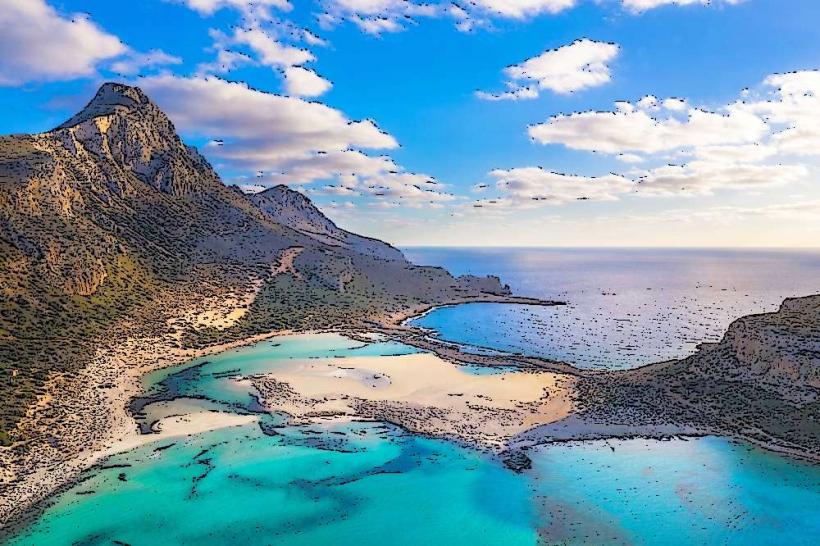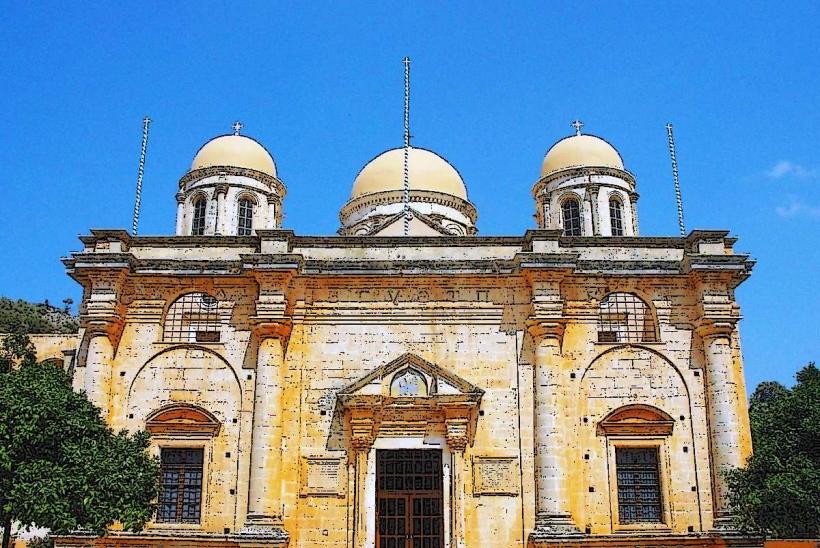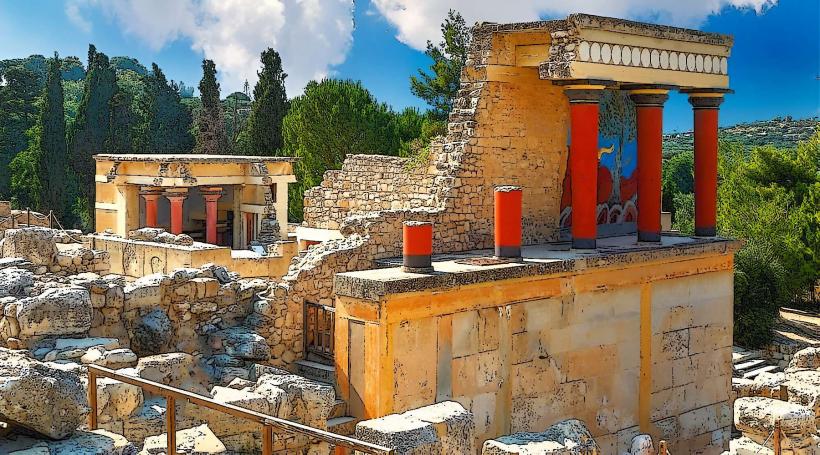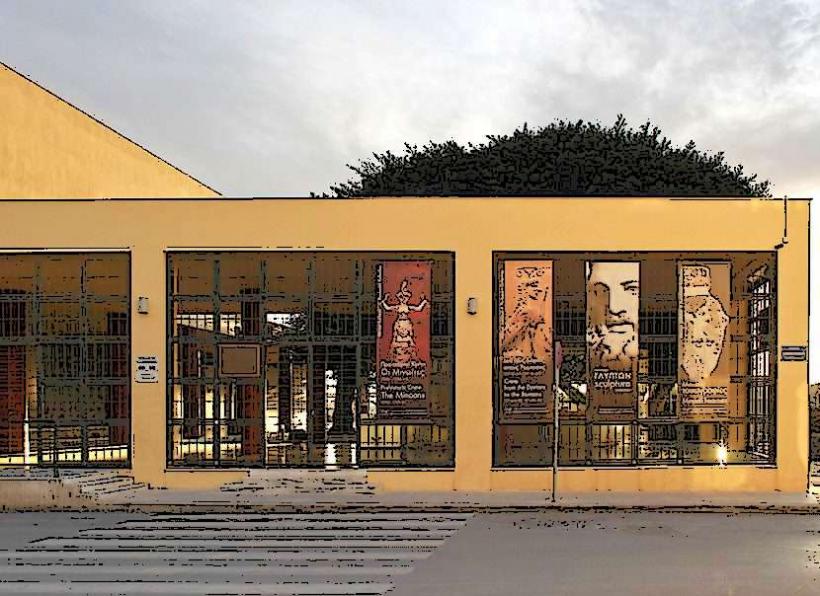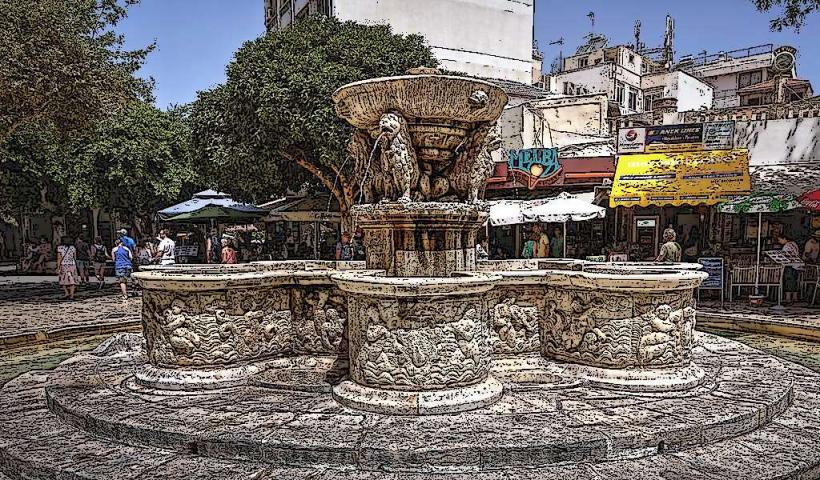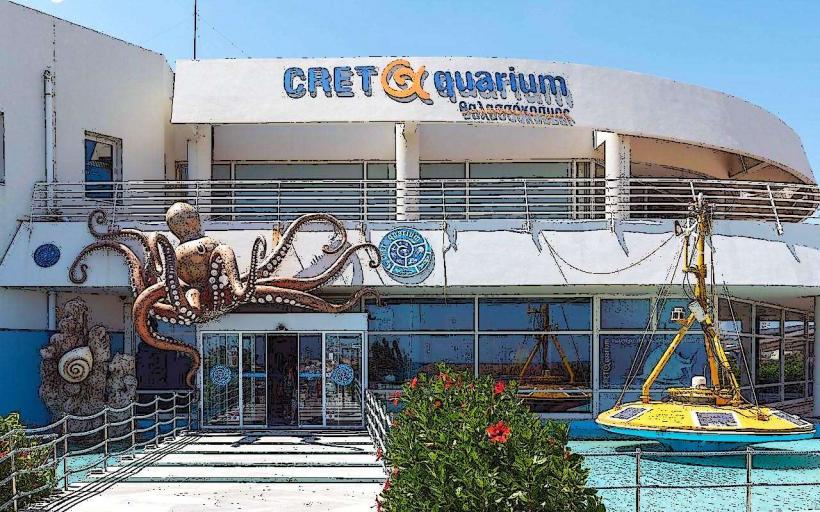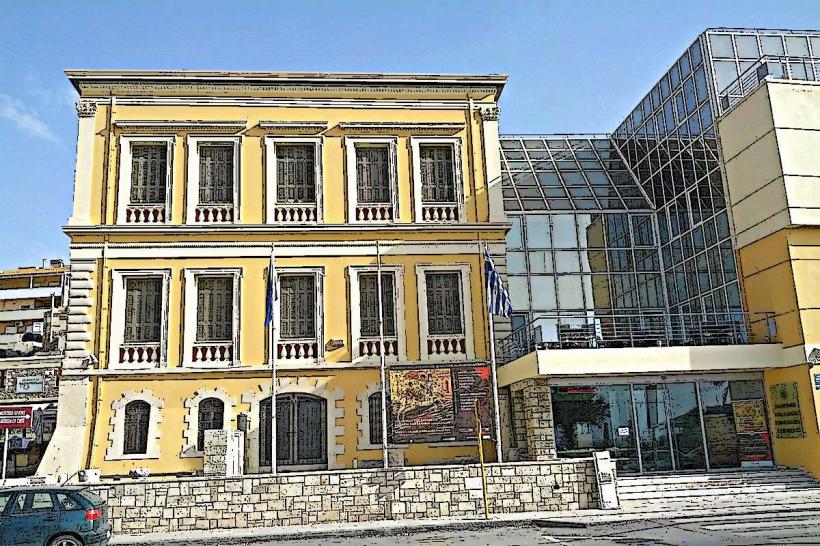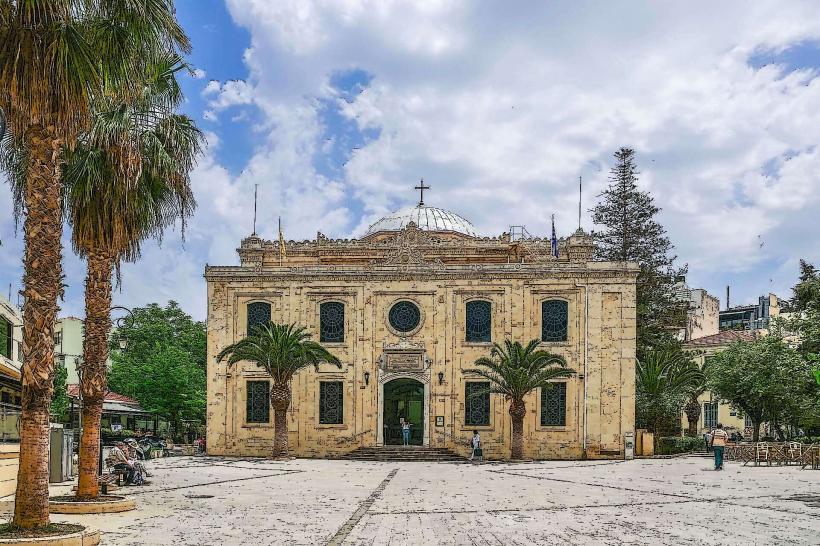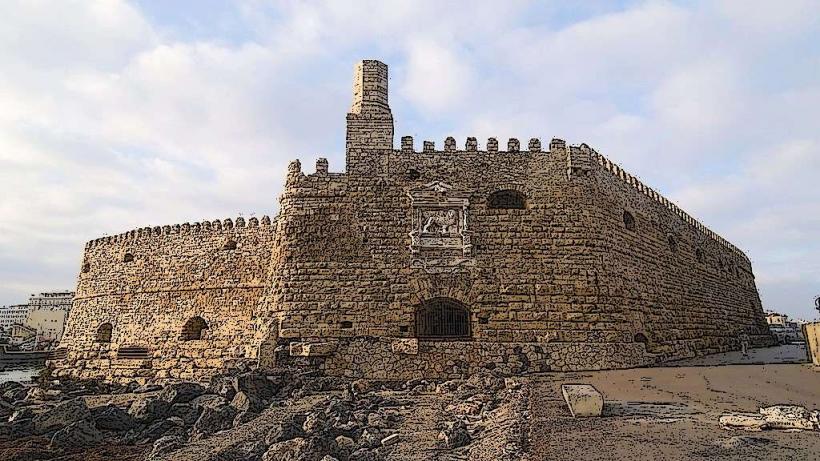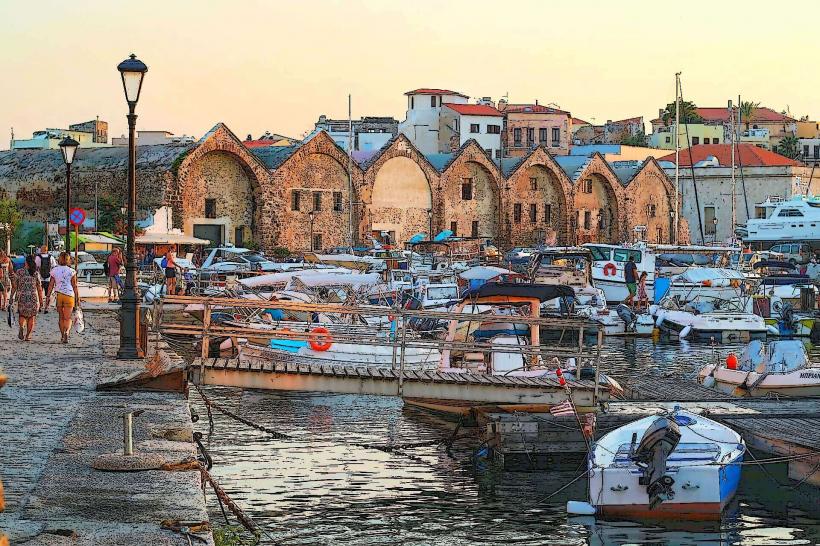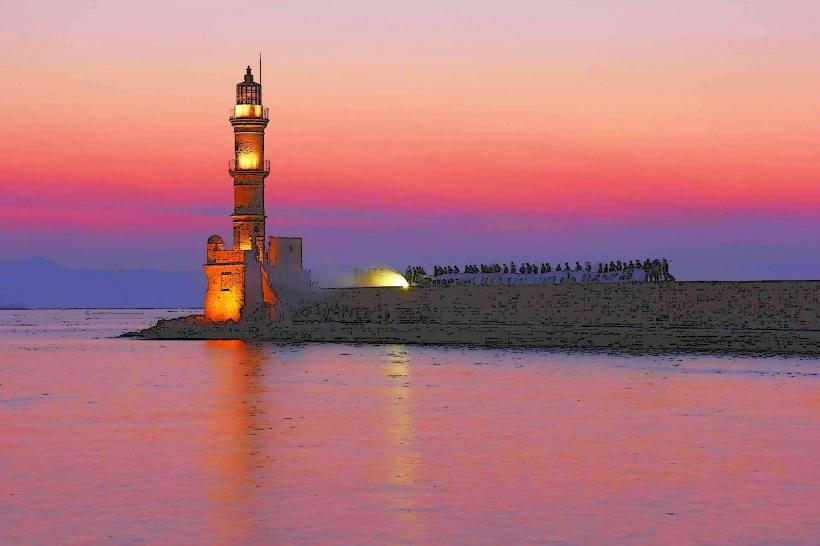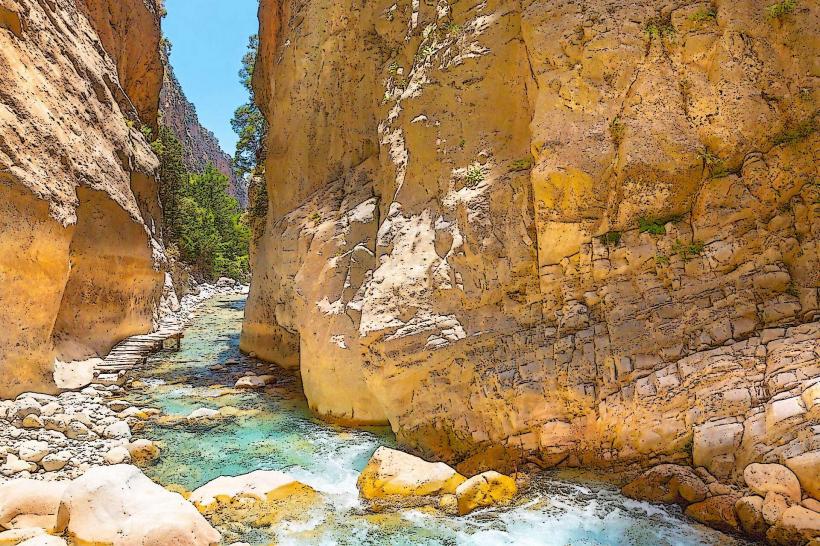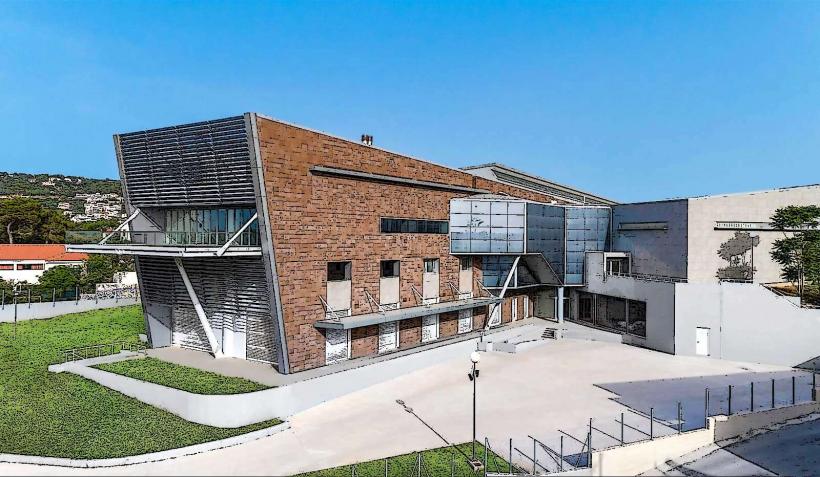Information
Landmark: Koules FortressCity: Crete
Country: Greece
Continent: Europe
Koules Fortress (also known as the Heraklion Fortress) is a Venetian fortress located at the entrance of the Heraklion Harbor in Heraklion, Crete. The fortress is one of the most prominent landmarks in the city and is an important historical site, reflecting the island's strategic importance throughout history, particularly during the Venetian period.
Overview:
Location: Koules Fortress is situated at the northern edge of the Heraklion Harbor, overlooking the sea. It is one of the first sights visitors encounter when arriving in the harbor area, making it an iconic part of the city's skyline.
History: The fortress was built by the Venetians between 1523 and 1540 as part of their defense strategy to protect the city of Heraklion (then known as Candia) from potential Ottoman attacks. It replaced an earlier Byzantine fortress and served as a major defensive stronghold during the Venetian occupation of Crete (1204–1669).
Architecture:
Design: Koules Fortress is a Renaissance-style fortification built primarily with stone. The design features typical Venetian military architecture, with a large, square base and robust defensive walls, intended to withstand both naval and land-based attacks.
Fortification Features:
- Thick Walls: The fortress is characterized by its massive walls, which are about 8 meters (26 feet) thick in places, designed to offer protection against cannon fire and sieges.
- Towers: The fortress has four corner towers, with the main entrance located at the harbor side of the structure. These towers were intended to provide strong points for defending the harbor entrance and the city.
- Cannons and Battlements: The fortress is equipped with cannons, and visitors can see the remains of artillery positions along the walls and on the roof, which would have been used to defend the harbor and the city from invaders.
Interior Layout: The interior of the fortress includes various chambers, rooms, and storage areas. Some parts of the structure were used for living quarters, while others were designated for military use, including storerooms and gunpowder storage. The roof of the fortress offers panoramic views of the Heraklion Harbor and the surrounding areas, and the walls have battlements for defense.
Historical Significance:
Venetian Rule: Koules Fortress was built during the Venetian occupation of Crete as part of the city’s defense system. The Venetians saw Heraklion as a crucial port for their control of the island and its trade routes in the eastern Mediterranean. Koules Fortress was part of a series of fortifications built by the Venetians to protect the city from both Ottoman and pirate threats.
Ottoman Period: In 1669, after a prolonged siege, the Ottomans captured Heraklion, and the fortress became an Ottoman military stronghold. The name “Koules” comes from the Ottoman Turkish word for "fortress". During the Ottoman rule, the fortress was used as a prison and for military purposes.
Modern Era: After the departure of the Ottomans in the late 19th century, Koules Fortress fell into disrepair. Today, it is a major tourist attraction, offering a glimpse into the historical military architecture and the tumultuous history of Crete.
Museum and Visitor Experience:
Museum: Today, Koules Fortress houses a small museum that highlights the history of the fortress, the Venetian and Ottoman periods in Crete, and the fortress’s role in the defense of Heraklion. Visitors can explore the various rooms and halls inside the fortress, which are now partially restored to their original state.
Exhibits: Inside the fortress, you can find exhibits that explain the history of the fortress’s construction, the significance of the defense mechanisms, and artifacts from different historical periods, including Ottoman and Venetian-era items.
Views: The roof of the fortress offers a stunning view of the Heraklion Harbor, the surrounding coastline, and the city of Heraklion itself. It is one of the best spots in the city to take photographs of the harbor and the Venetian port area.
Accessibility: The fortress is easily accessible to visitors, and it is a short walk from the city center. It is open to the public year-round, with regular opening hours, and there are often guided tours available for those who want to learn more about the fortress's history and significance.
Conclusion:
Koules Fortress is a must-visit historical site for anyone traveling to Heraklion, Crete. It is a testament to the island's rich and complex history, particularly its Venetian and Ottoman heritage. The fortress's impressive architecture, combined with its strategic location and historical significance, makes it a fascinating place to explore, offering insights into the defense strategies of the past as well as stunning views of the modern-day harbor.

